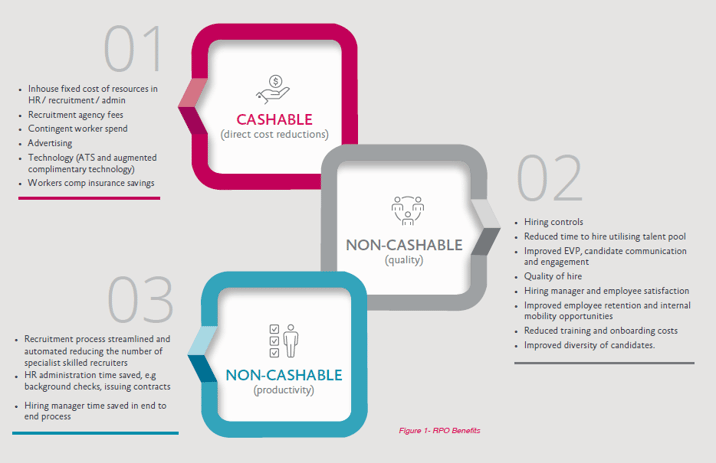Taking a more holistic approach to outsourcing HR
Employees and job-seekers remember the companies that support them, who respond to their job applications and who provide constructive feedback following an unsuccessful interview. They will also remember those that did not.
How then can People & Culture and business leaders right-size their talent teams to deliver a quality experience to their hiring communities and job applicants, and maintain the flexibility they need to respond to further market change? Here, we apply a holistic approach to answer this question, including scalable solutions you can act on.
Reduce your fixed costs
When reducing team headcount and hiring costs, we need to take a more holistic view of the future costs we incur in doing so. It’s not just lost skills and knowledge; a damaged brand and reputation can take years (and a lot of money and effort) to repair.
To help manage peaks and troughs in demand, it may be worth considering engaging with an external provider of talent solutions. Outsourced HR solutions will give you the opportunity to reduce your fixed costs and, if designed and managed well by an experienced provider, will also reduce spend on recruitment agency fees, advertising, technology, and contingent workers.
There is also a wide range of non-cashable benefits that outsourced HR brings. From best practice processes to improved compliance and workforce management, a partnership with an experienced talent provider can have a significant impact on business productivity and efficiency.
With experience, comes quality.
When you outsource talent acquisition and management to a specialist provider, you will immediately benefit from their experience, networks, and knowledge in niche areas such as employer branding, employee experience, talent sourcing, onboarding, internal mobility, retention, and diversity and inclusion. For a business navigating economic uncertainty and reduced budgets for hiring and training, access to specialist skills in these areas can be transformational in terms of the quality of service you offer your hiring and candidate communities.
With quality, comes cost reduction.
Recruitment outsourcing models are designed to improve efficiency and reduce costs. There is a range of outsourcing models available, from permanent recruitment process outsourcing (RPO) and managed service programs (MSP) for contingent hiring to short-term and flexible project recruitment solutions.
Typically, you’ll pay a fixed monthly management fee, which gives you the certainty of service delivery, plus a transactional fee for each successful hire, which ensures that your talent model is flexible and is always right-sized to your organisation’s hiring needs.
So, is recruitment outsourcing right for your business?
From a cost perspective, for an average business with around 600 hires per year, spread across professional and managerial hires and volume roles, an RPO could achieve annualised cost savings of $1.1 million. In a year of rebuilding, re-energising teams and refocusing on customers, that’s a significant contribution to essential programs.

Recruitment process outsourcing (RPO) benefits.
However, it need not be a question of in-source or out-source. Many businesses are opting for blended models that bring in specialist support for certain projects or areas of the business, or that add flexibility to a recently reduced-size talent team. An outsourced solution can also offer a temporary bridge until you feel confident to make longer-term people decisions.
Our advice is to put your customer first. Consider the needs of your hiring communities, staff and candidates, and think about what sort of talent acquisition and management service you want to offer. What are you prepared to forgo, and what aspects of your service are non-negotiable? Most importantly, take the time to evaluate the opportunity cost of any reduction in staffing or service levels - the decision you make now could dramatically affect your business’s ability to bounce back from 2020.
Conclusion
There is no one-size-fits-all solution to outsourcing HR, but we know the future will demand flexibility, agility and resilience. We can help you make sure your talent team is built for it. At Harrier, we offer a wide range of support models together with a team of talent advisors who can quickly support customers across the country with specialist advice and support on an ad-hoc basis.
If you’re interested in how much an outsourced talent solution could save your business, reach out to our team to discuss today.
GET STARTED
